We’d like to remind Forumites to please avoid political debate on the Forum.
This is to keep it a safe and useful space for MoneySaving discussions. Threads that are – or become – political in nature may be removed in line with the Forum’s rules. Thank you for your understanding.
IMPORTANT: Please make sure your posts do not contain any personally identifiable information (both your own and that of others). When uploading images, please take care that you have redacted all personal information including number plates, reference numbers and QR codes (which may reveal vehicle information when scanned).
The MSE Forum Team would like to wish you all a Merry Christmas. However, we know this time of year can be difficult for some. If you're struggling during the festive period, here's a list of organisations that might be able to help
📨 Have you signed up to the Forum's new Email Digest yet? Get a selection of trending threads sent straight to your inbox daily, weekly or monthly!
Has MSE helped you to save or reclaim money this year? Share your 2025 MoneySaving success stories!
UKPC fine whether to pay
Comments
-
I've prepared a POPLA appeal and would like to post it here for approval before submitting (with pics). How do I do that? Sorry this is my first time doing this. TIA0
-
Copy and paste
Take photos and load them in
lots of ways2 -
More bad news for UkPC
https://forums.moneysavingexpert.com/discussion/6242993/court-report-brentford-telephone-ukpc-roasted#latest
You never know how far you can go until you go too far.3 -
Dear POPLA Adjudicator,I am the registered keeper of vehicle xxxxxx and am appealing a parking charge from UKPC, based on the following1. Notice to Keeper is not compliant with the POFA 2012 - no keeper Liability.2. Poorly marked bays especially in adverse weather conditions - low maintained car park.3. The signs in this car park are not prominent, clear or legible from all parking spaces and there is insufficient notice of the sum of the parking charge itself.4. The operator has not shown that the individual who it is pursuing is in fact the driver who may have been potentially liable for the charge.5. Amount demanded is a penalty1. The Notice to Keeper is not compliant with the POFA 2012 – no keeper liability.As a notice to driver was provided on the vehicle, an NTK is required to be issued no sooner than 28 days after, or no later than 56 days after the service of that notice. This stipulation is laid out in Schedule 4 of the Protection of Freedoms Act 2012 (PoFA).The alleged infringement occurred on 9/12/2020 and from my understanding the NTK was required to reach me by 03/02/2021. As can be seen in the attached photo the NTK was in fact dated 03/02/2021. Therefore it could not have been posted until that date at the earliest, meaning it would reach me after said date (ultimately received by me 06/02/2021). Therefore, there can be no keeper liability.The keeper liability requirements of Schedule 4 of the Protection of Freedoms Act 2012 must be complied with, where the appellant is the registered keeper, as in this case. One of these requirements is the issue of a NTK compliant with certain provisions. This operator failed to serve the NTK within the timeframe laid out. As there has been no admission as to who may have parked the car and no evidence of this person has been produced by the operator. Detailed dates shown below:-Day 0 = 9th DecemberDay 1 = 10th December…Day 28 = 6th January - earliest day UKPC could obtain keeper details from DVLA…Day 56 = 3rd February - last day NTK must be given (received) for a keeper to be liable under PoFA 2012Day 57 = 4th FebruaryDay 58 = 5th February - date assumed received (given) according to the POFA 2012Day 59 = 6th February - date actually received.So, for this appeal, I believe you should rule in my favour on the above alone.2. On the notice to driver, and my UKPC appeal claim, it claims that my car was not parked in designated clearly marked bays.I have a few issues with this matter, firstly the car park is in extremely poor condition and has not been maintained for a number of years, I enclose recent photos of the condition of this car park.The lines of the bays don't mark the length of the bays, just a small line in front of kerb. These lines are barely visible. The photos clearly show the adverse weather conditions. It was raining heavily and the bay markings would have been extremely visually impaired.Plus there are no signs at either entrance/exit to this FREE car park, (photos attached to evidence).The nearest sign to the car, (photo to evidence), is difficult to see and pointing the other way. Indeed there is no sign relating to restrictions visible from the position of the car or that would be seen on the way to that specific parking position. Signage issues fully explored in point 3.3. Continuing from the above, I note that within the Protection of Freedoms Act (POFA) 2012 it discusses the clarity that needs to be provided to make a motorist aware of the parking charge. Specifically, it requires that the driver is given 'adequate notice' of the charge. POFA 2012 defines 'adequate notice' as follows:''(3) For the purposes of sub-paragraph (2) 'adequate notice' means notice given by: (a) the display of one or more notices in accordance with any applicable requirements prescribed in regulations under paragraph 12 for, or for purposes including, the purposes of sub-paragraph (2); or (b) where no such requirements apply, the display of one or more notices which: (i) specify the sum as the charge for unauthorised parking; and (ii) are adequate to bring the charge to the notice of drivers who park vehicles on the relevant land''.Even in circumstances where POFA 2012 does not apply, I believe this to be a reasonable standard to use when making my own assessment, as appellant, of the signage in place at the location. Having considered the signage in place at this particular site against the requirements of Section 18 of the BPA Code of Practice and POFA 2012, I am of the view that the signage at the site - given the minuscule font size of the £100, which is illegible in most photographs and does not appear at all at the entrance - is NOT sufficient to bring the parking charge (i.e. the sum itself) to the attention of the motorist.There was no contract nor agreement on the 'parking charge' at all. It is submitted that the driver did not have a fair opportunity to read about any terms involving this huge charge, which is out of all proportion and not saved by the dissimilar 'ParkingEye Ltd v Beavis' case.In the Beavis case, which turned on specific facts relating only to the signs at that site and the unique interests and intentions of the landowners, the signs were unusually clear and not a typical example for this notorious industry. The Supreme Court were keen to point out the decision related to that car park and those facts only:In the Beavis case, the £85 charge itself was in the largest font size with a contrasting colour background and the terms were legible, fairly concise and unambiguous. There were 'large lettering' signs at the entrance and all around the car park, according to the Judges.Here is the 'Beavis case' sign as a comparison to the signs under dispute in this case:This case, by comparison, does not demonstrate an example of the 'large lettering' and 'prominent signage' that impressed the Supreme Court Judges and swayed them into deciding that in the specific car park in the Beavis case alone, a contract and 'agreement on the charge' existed.Here, the signs are sporadically placed, indeed obscured and hidden in some areas. They are unremarkable, not immediately obvious as parking terms and the wording is mostly illegible, being crowded and cluttered with a lack of white space as a background. It is indisputable that placing letters too close together in order to fit more information into a smaller space can drastically reduce the legibility of a sign, especially one which must be read BEFORE the action of parking and leaving the car.It is vital to observe, since 'adequate notice of the parking charge' is mandatory under the POFA Schedule 4 and the BPA Code of Practice, these signs do not clearly mention the parking charge which is hidden in small print (and does not feature at all on some of the signs). Areas of this site are unsigned and there are no full terms displayed - i.e. with the sum of the parking charge itself in large lettering - at the entrance either, so it cannot be assumed that a driver drove past and could read a legible sign, nor parked near one.This case is more similar to the signage in POPLA decision 5960956830 on 2.6.16, where the Assessor Rochelle Merritt found as fact that signs in a similar size font in a busy car park where other unrelated signs were far larger, was inadequate:''the signage is not of a good enough size to afford motorists the chance to read and understand the terms and conditions before deciding to remain in the car park. [...] In addition the operators signs would not be clearly visible from a parking space [...] The appellant has raised other grounds for appeal but I have not dealt with these as I have allowed the appeal.''From the evidence I have seen so far, the terms appear to be displayed inadequately, in letters no more than about half an inch high, approximately. I put the operator to strict proof as to the size of the wording on their signs and the size of lettering for the most onerous term, the parking charge itself.The letters seem to be no larger than .40 font size going by this guide:0
-
CONTINUED........As further evidence that this is inadequate notice, Letter Height Visibility is discussed here:''When designing your sign, consider how you will be using it, as well as how far away the readers you want to impact will be. For example, if you are placing a sales advertisement inside your retail store, your text only needs to be visible to the people in the store. 1-2' letters (or smaller) would work just fine. However, if you are hanging banners and want drivers on a nearby highway to be able to see them, design your letters at 3' or even larger.''...and the same chart is reproduced here:''When designing an outdoor sign for your business keep in mind the readability of the letters. Letters always look smaller when mounted high onto an outdoor wall''.''...a guideline for selecting sign letters. Multiply the letter height by 10 and that is the best viewing distance in feet. Multiply the best viewing distance by 4 and that is the max viewing distance.''So, a letter height of just half an inch, showing the terms and the 'charge' and placed high on a wall or pole or buried in far too crowded small print, is woefully inadequate in an outdoor car park. Given that letters look smaller when high up on a wall or pole, as the angle renders the words less readable due to the perspective and height, you would have to stand right in front of it and still need a stepladder (and perhaps a torch and/or magnifying glass) to be able to read the terms.Under Lord Denning's Red Hand Rule, the charge (being 'out of all proportion' with expectations of drivers in this car park and which is the most onerous of terms) should have been effectively: 'in red letters with a red hand pointing to it' - i.e. VERY clear and prominent with the terms in large lettering, as was found to be the case in the car park in 'Beavis'. A reasonable interpretation of the 'red hand rule' and the 'signage visibility distance' tables above and the BPA Code of Practice, taking all information into account, would require a parking charge and the terms to be displayed far more transparently, on a lower sign and in far larger lettering, with fewer words and more 'white space' as background contrast. Indeed in the Consumer Rights Act 2015 there is a 'Requirement for transparency':(1) A trader must ensure that a written term of a consumer contract, or a consumer notice in writing, is transparent.(2) A consumer notice is transparent for the purposes of subsection (1) if it is expressed in plain and intelligible language and it is legible.The Beavis case signs not being similar to the signs in this appeal at all, I submit that the persuasive case law is in fact 'Vine v London Borough of Waltham Forest [2000] EWCA Civ 106' about a driver not seeing the terms and consequently, she was NOT deemed bound by them.This judgment is binding case law from the Court of Appeal and supports my argument, not the operator's case:This was a victory for the motorist and found that, where terms on a sign are not seen and the area is not clearly marked/signed with prominent terms, the driver has not consented to - and cannot have 'breached' - an unknown contract because there is no contract capable of being established. The driver in that case (who had not seen any signs/lines) had NOT entered into a contract. The recorder made a clear finding of fact that the plaintiff, Miss Vine, did not see a sign because the area was not clearly marked as 'private land' and the signs were obscured/not adjacent to the car and could not have been seen and read from a driver's seat before parking.So, for this appeal, I put this operator to strict proof of where the car was parked and (from photos taken in the same lighting conditions) how their signs appeared on that date, at that time, from the angle of the driver's perspective. Equally, I require this operator to show how the entrance signs appear from a driver's seat, not stock examples of 'the sign' in isolation/close-up. I submit that full terms simply cannot be read from a car before parking and mere 'stock examples' of close-ups of the (alleged) signage terms will not be sufficient to disprove this.4. In cases with a keeper appellant, yet no POFA 'keeper liability' to rely upon, POPLA must first consider whether they are confident that the Assessor knows who the driver is, based on the evidence received. No presumption can be made about liability whatsoever. A vehicle can be driven by any person (with the consent of the owner) as long as the driver is insured. There is no dispute that the driver was entitled to drive the car and I can confirm that they were, but I am exercising my right not to name that person.In this case, no other party apart from an evidenced driver can be told to pay. As there has been no admission regarding who was driving, and no evidence has been produced, it has been held by POPLA on numerous occasions, that a parking charge cannot be enforced against a keeper without a valid NTK.As the keeper of the vehicle, it is my right to choose not to name the driver, yet still not be lawfully held liable if an operator is not using or complying with Schedule 4. This applies regardless of when the first appeal was made and regardless of whether a purported 'NTK' was served or not, because the fact remains I am only appealing as the keeper and ONLY Schedule 4 of the POFA (or evidence of who was driving) can cause a keeper appellant to be deemed to be the liable party.The burden of proof rests with the Operator to show that (as an individual) I have personally not complied with terms in place on the land and show that I am personally liable for their parking charge. They cannot.Furthermore, the vital matter of full compliance with the POFA was confirmed by parking law expert barrister, Henry Greenslade, the previous POPLA Lead Adjudicator, in 2015:Understanding keeper liability'There appears to be continuing misunderstanding about Schedule 4. Provided certain conditions are strictly complied with, it provides for recovery of unpaid parking charges from the keeper of the vehicle.There is no 'reasonable presumption' in law that the registered keeper of a vehicle is the driver. Operators should never suggest anything of the sort. Further, a failure by the recipient of a notice issued under Schedule 4 to name the driver, does not of itself mean that the recipient has accepted that they were the driver at the material time. Unlike, for example, a Notice of Intended Prosecution where details of the driver of a vehicle must be supplied when requested by the police, pursuant to Section 172 of the Road Traffic Act 1988, a keeper sent a Schedule 4 notice has no legal obligation to name the driver. [...] If {POFA 2012 Schedule 4 is} not complied with then keeper liability does not generally pass.'Therefore, no lawful right exists to pursue unpaid parking charges from myself as keeper of the vehicle, where an operator cannot transfer the liability for the charge using the POFA.This exact finding was made in 6061796103 against ParkingEye in September 2016, where POPLA Assessor Carly Law found:''I note the operator advises that it is not attempting to transfer the liability for the charge using the Protection of Freedoms Act 2012 and so in mind, the operator continues to hold the driver responsible. As such, I must first consider whether I am confident that I know who the driver is, based on the evidence received. After considering the evidence, I am unable to confirm that the appellant is in fact the driver. As such, I must allow the appeal on the basis that the operator has failed to demonstrate that the appellant is the driver and therefore liable for the charge. As I am allowing the appeal on this basis, I do not need to consider the other grounds of appeal raised by the appellant. Accordingly, I must allow this appeal.''5. Amount demanded is a penalty and is punitive, contravening the Consumer Rights Act 2015. The authority on this is ParkingEye v Beavis. That case was characterised by clear and ample signage where the motorist had time to read, and then consider the signage and decide whether to accept or not. In this case the signage was neither clear not ample, and the motorist had not time to read the signage, let alone consider it, as the charge was applied instantly the vehicle stopped. The signage cannot be read safely from a moving vehicle.I put UKPC to strict proof of compliance with all of the above requirements.I therefore request that POPLA uphold my appeal and cancel this PCN0
-
It looks okay to me, except you should also include, Not the landowner, and, No standing to issue charges in their own name.I married my cousin. I had to...I don't have a sister.
 All my screwdrivers are cordless."You're Safety Is My Primary Concern Dear" - Laks2
All my screwdrivers are cordless."You're Safety Is My Primary Concern Dear" - Laks2 -
This is the appeal I've prepared, any advice appreciated before it's submitted ( I have till 5th March). Trying to upload pics too.
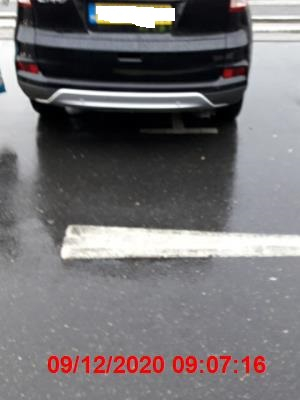
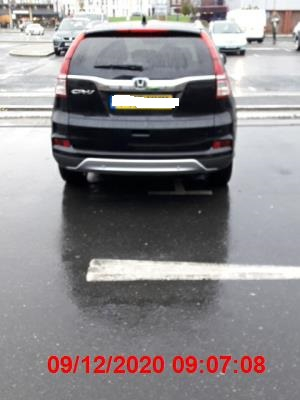
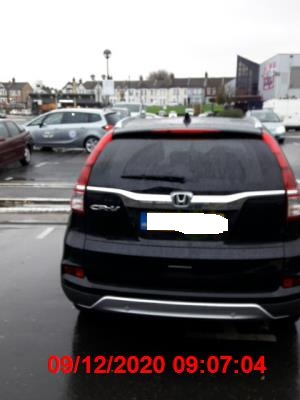
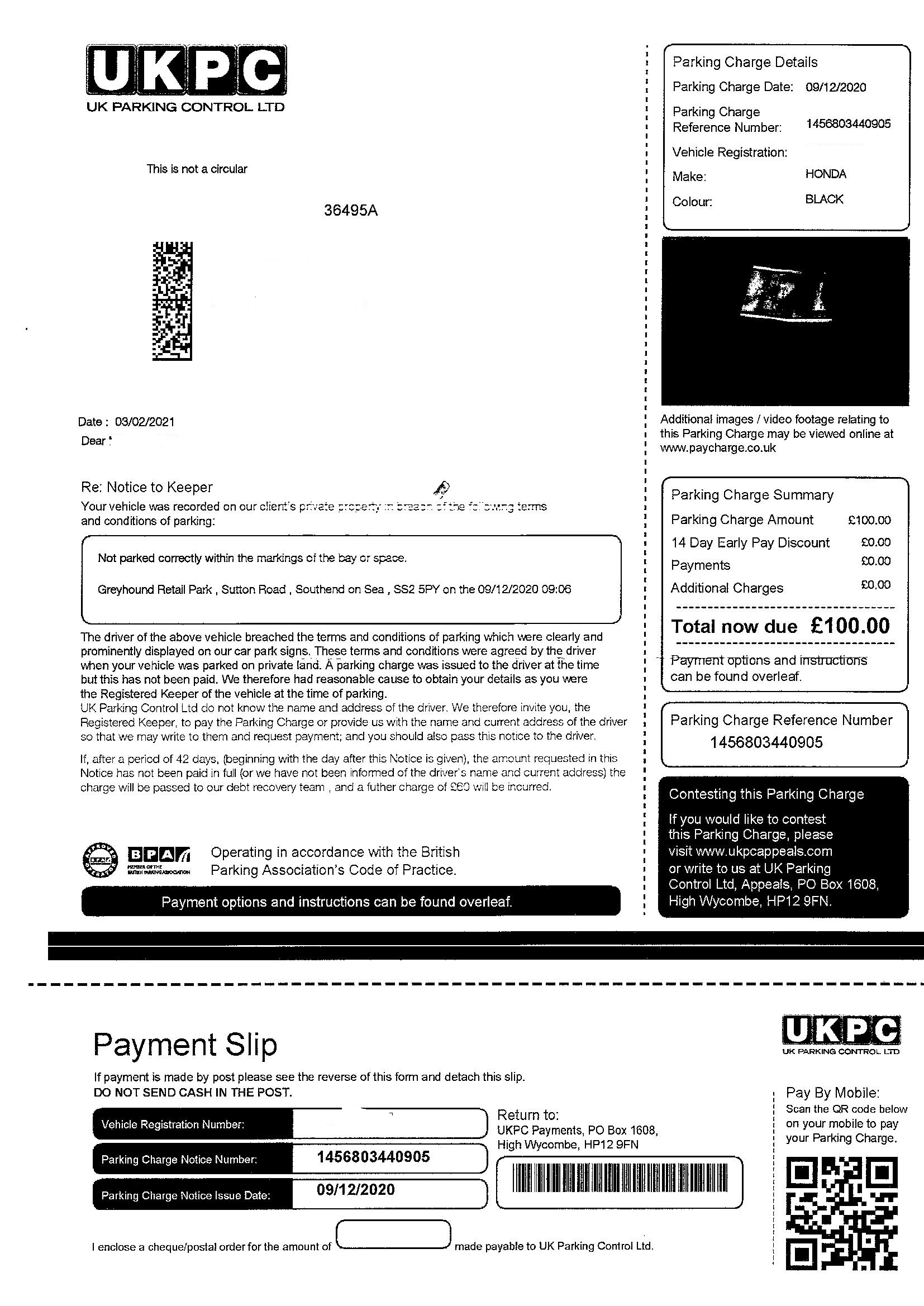
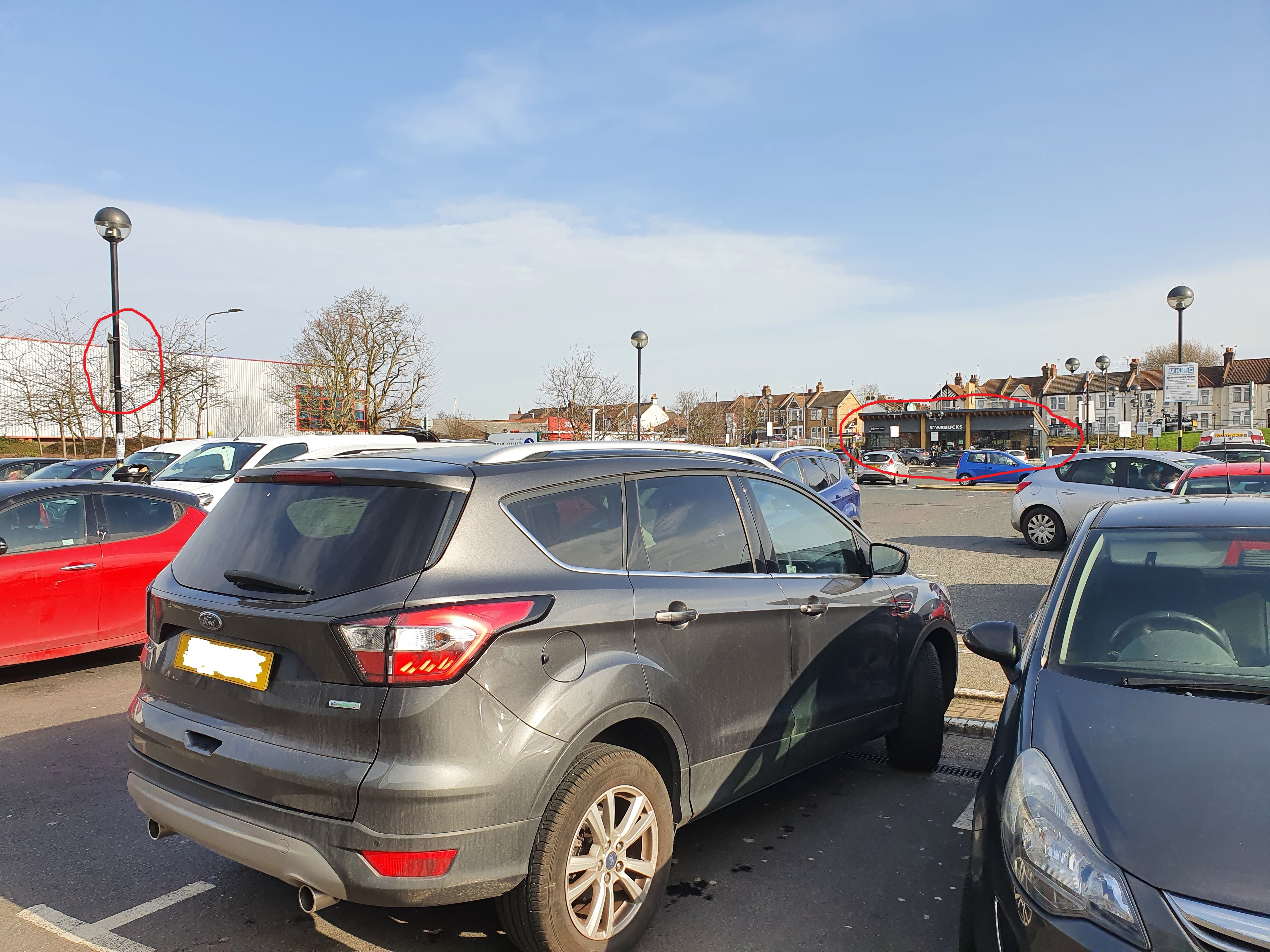
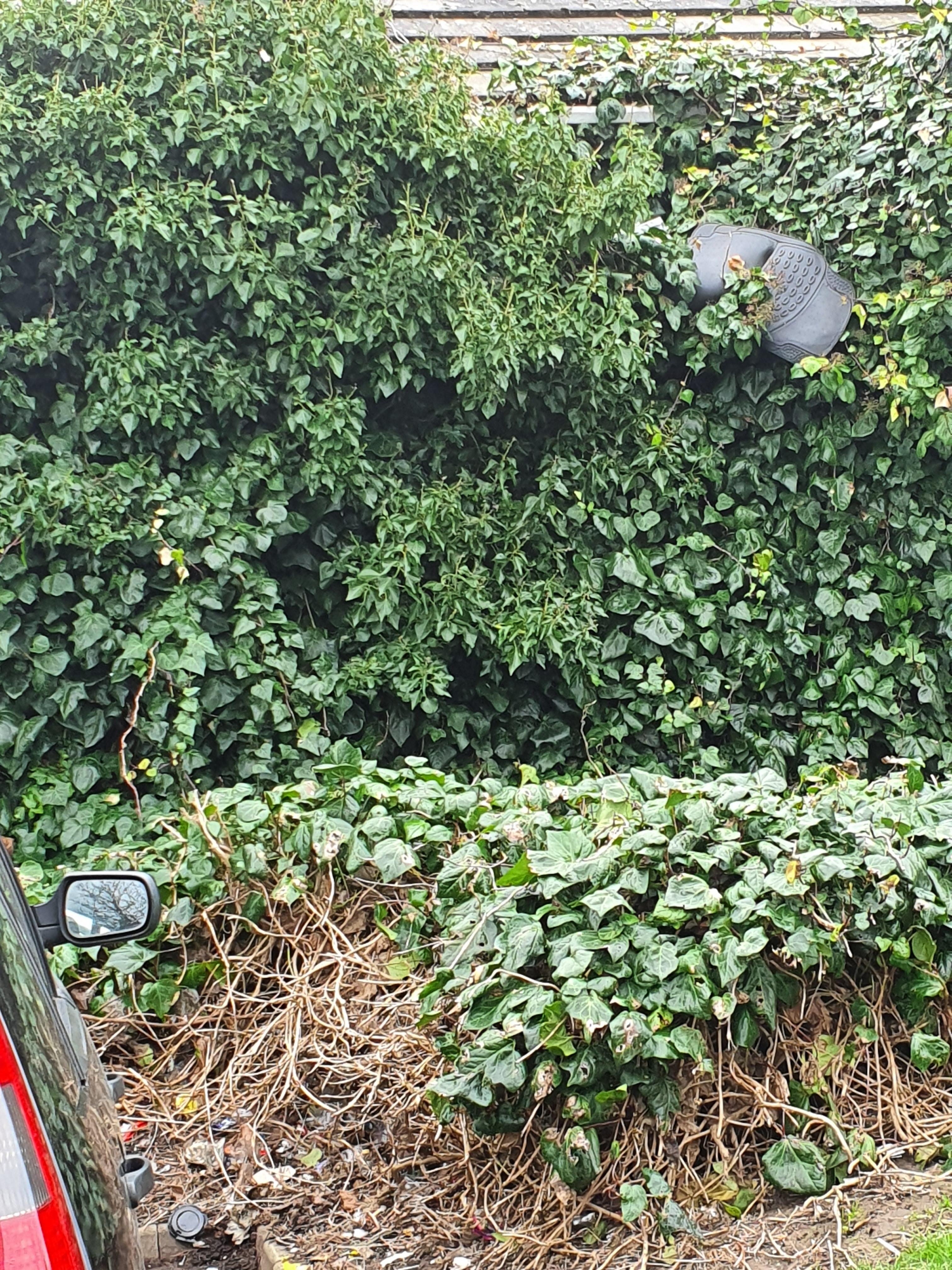
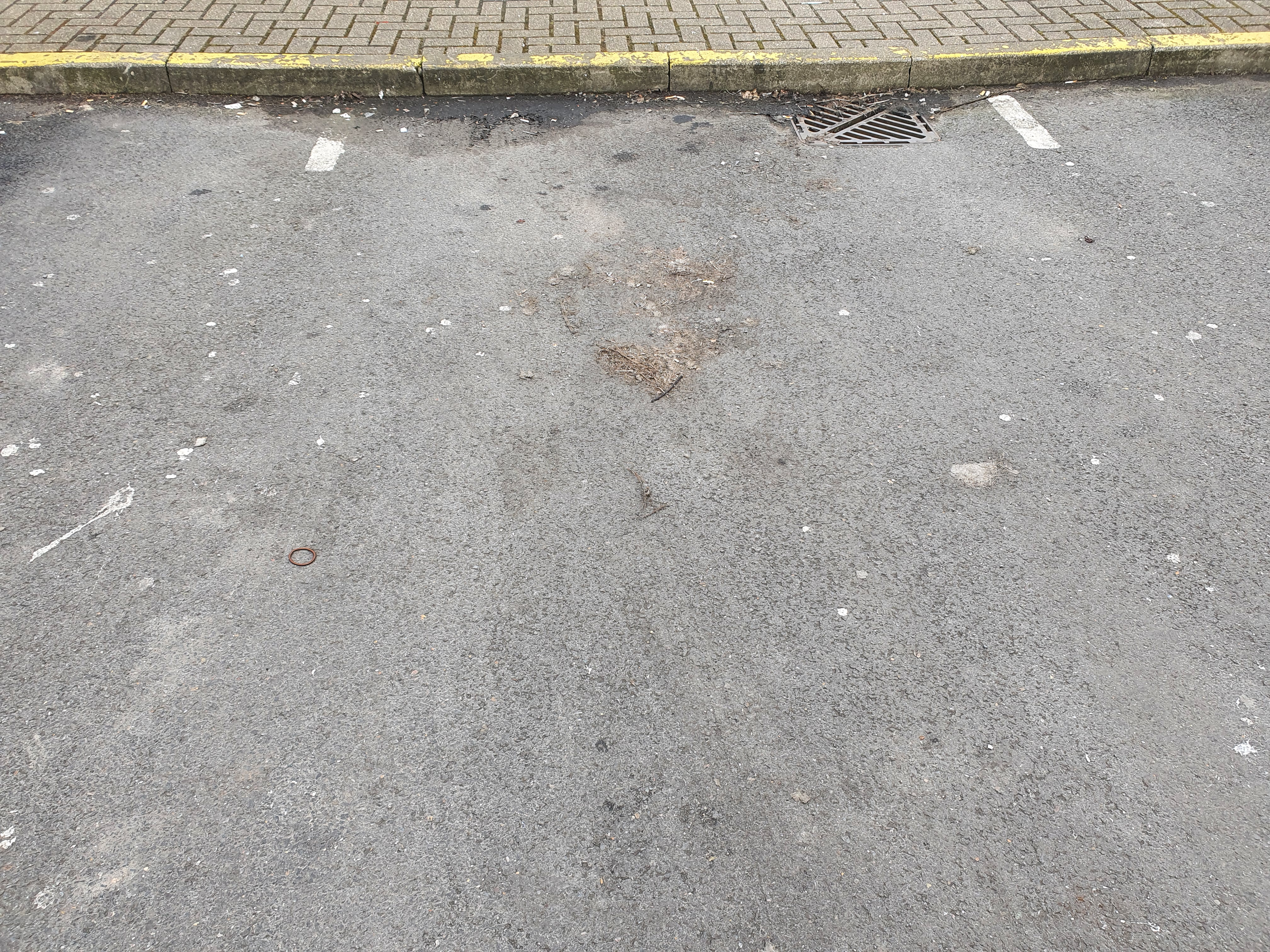
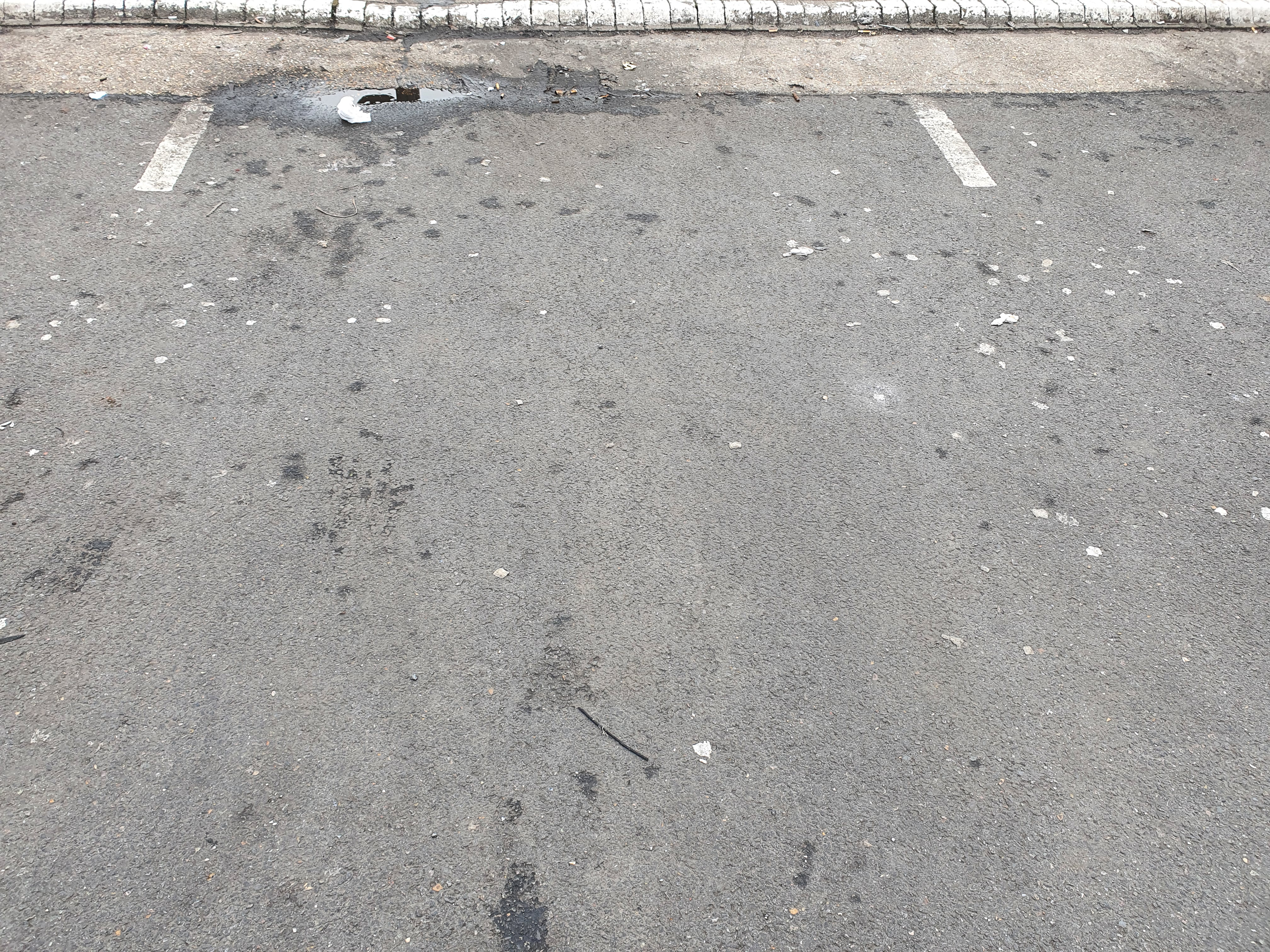
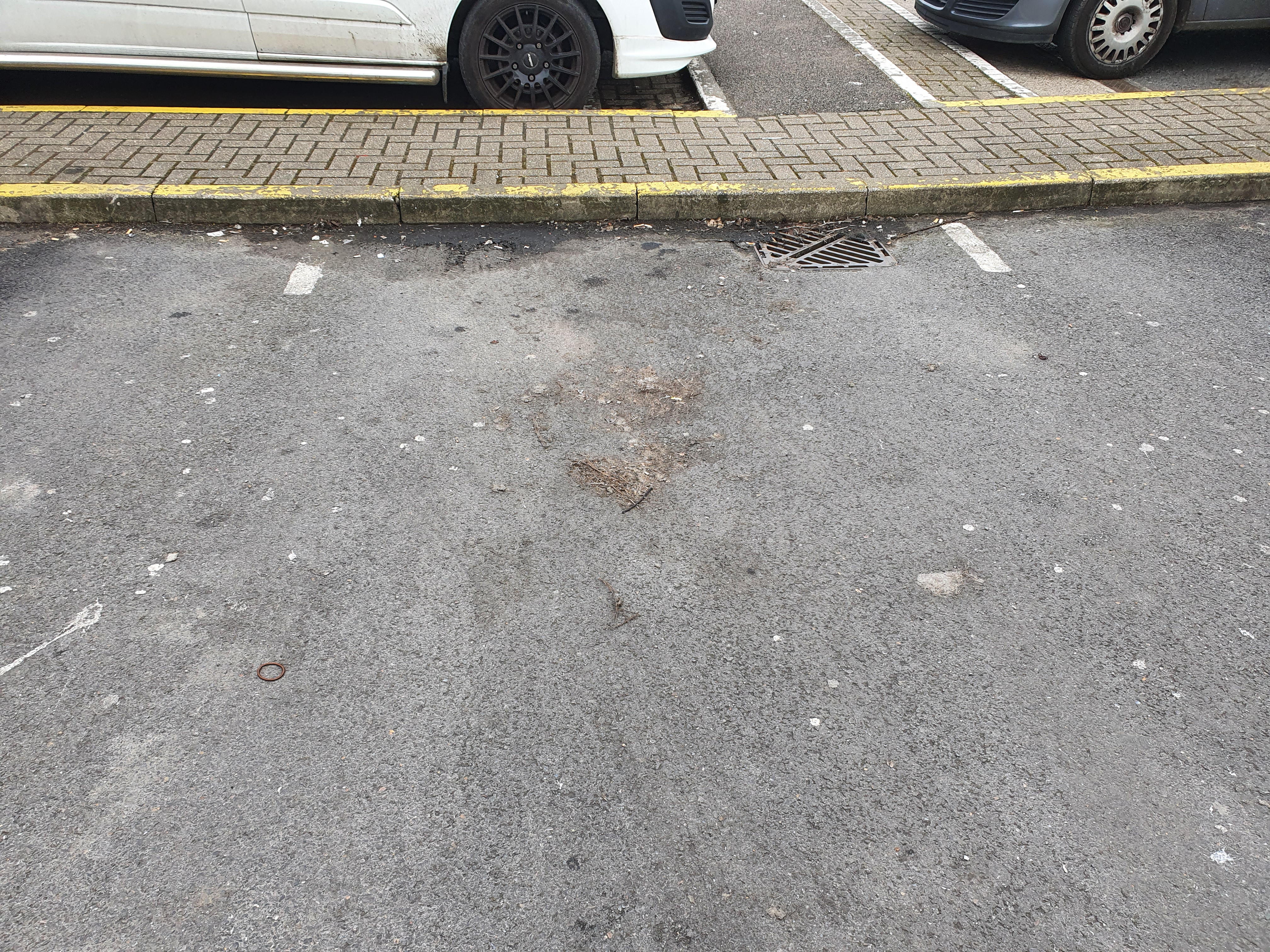
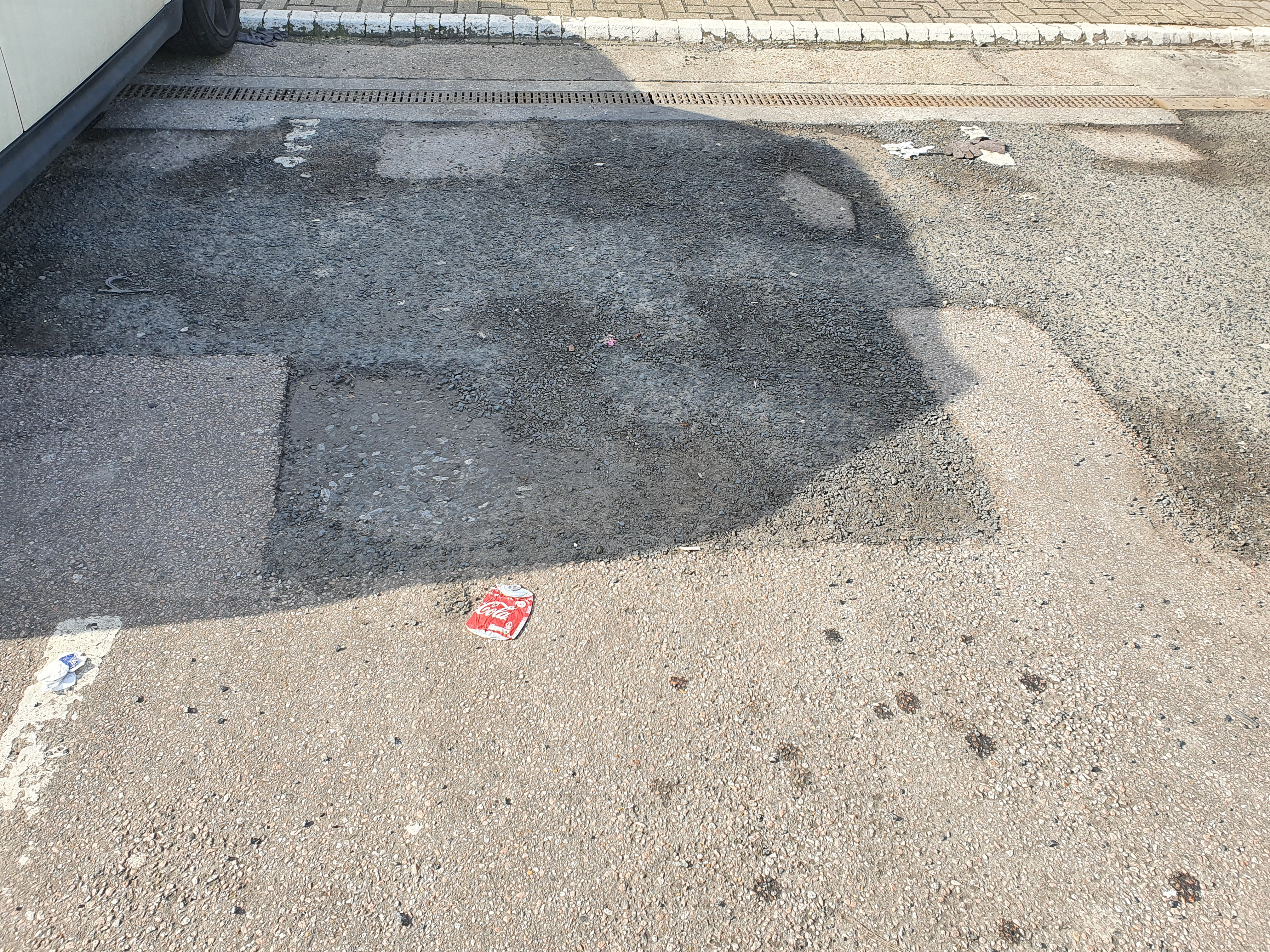
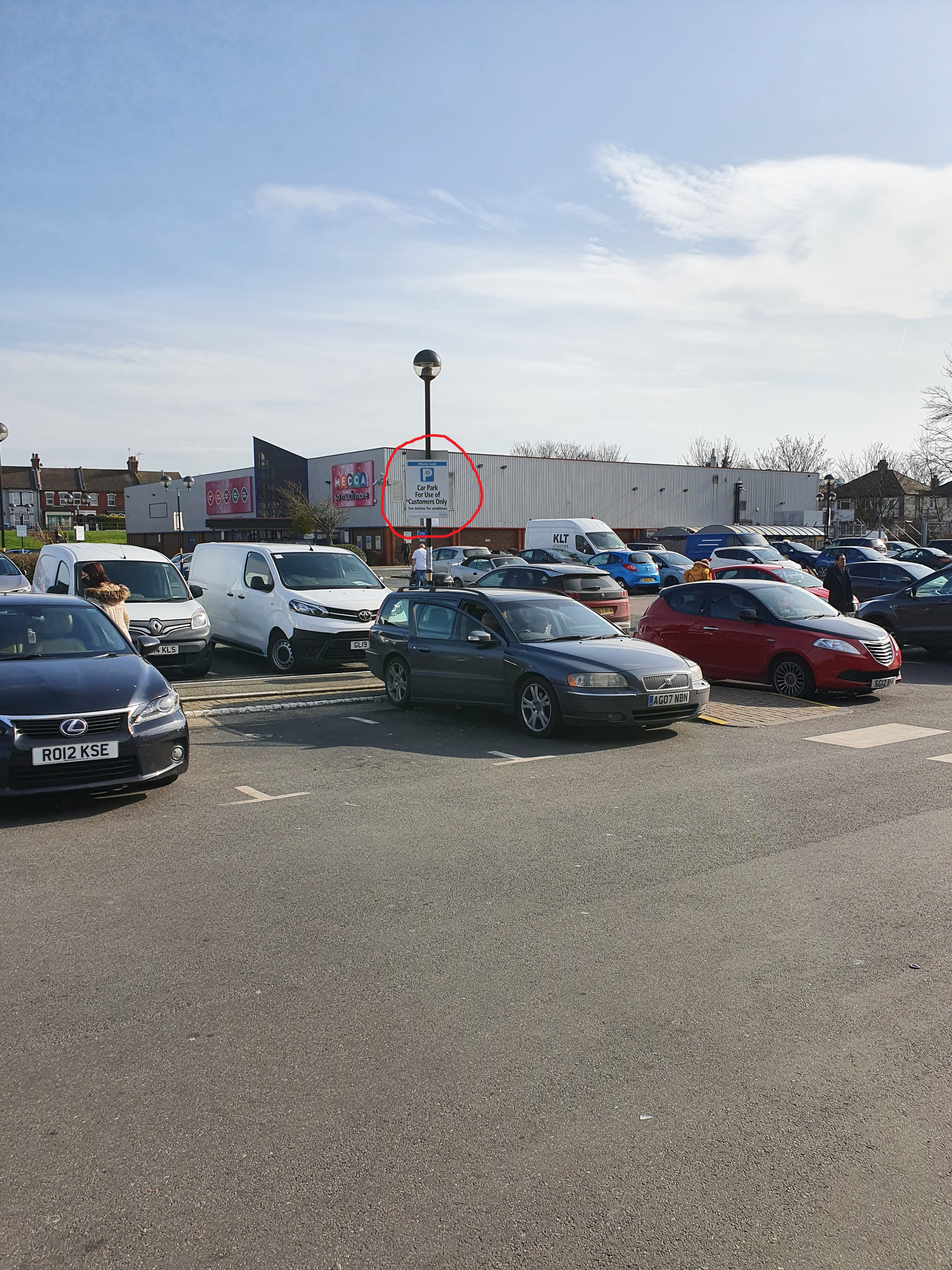
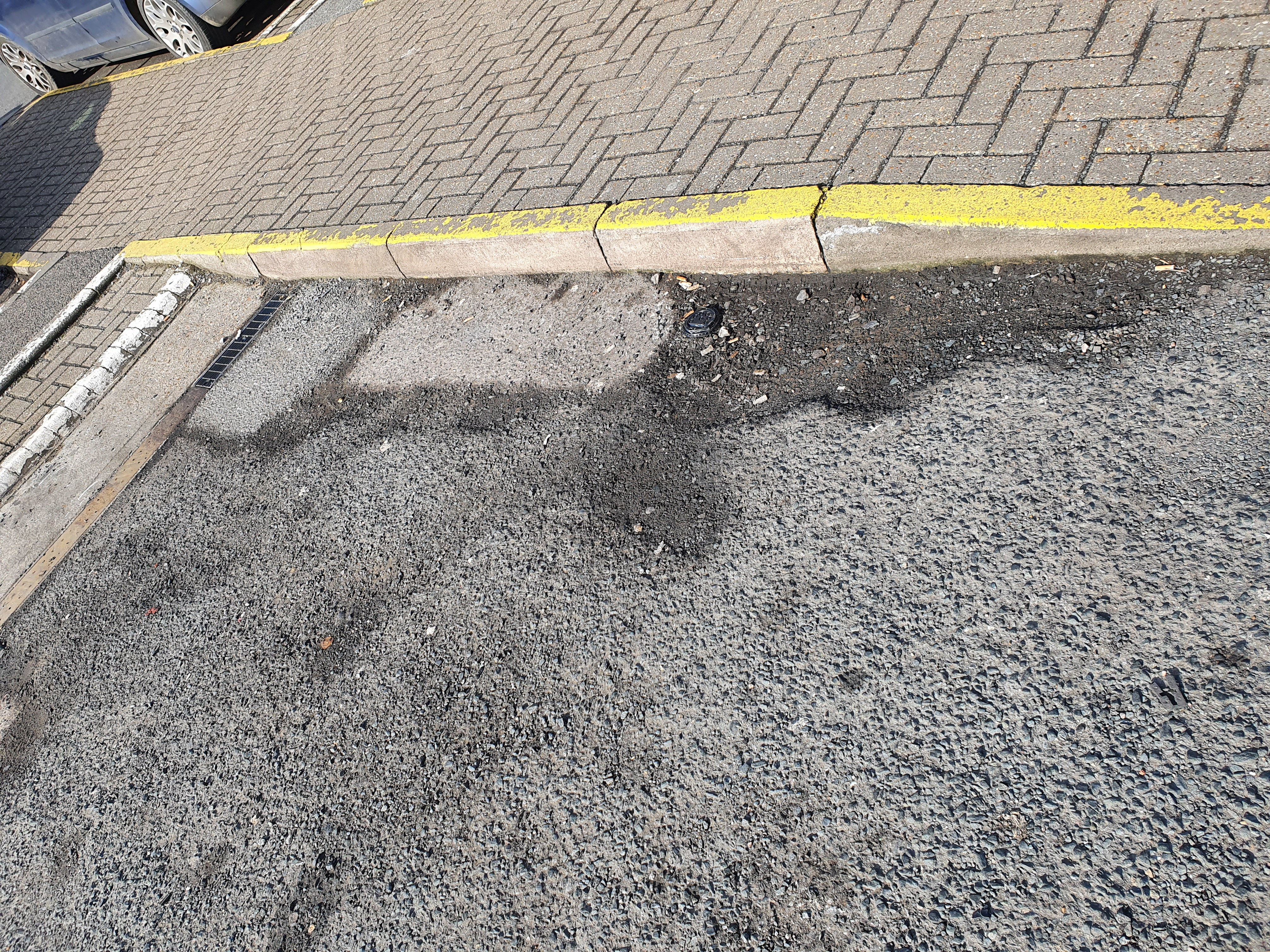
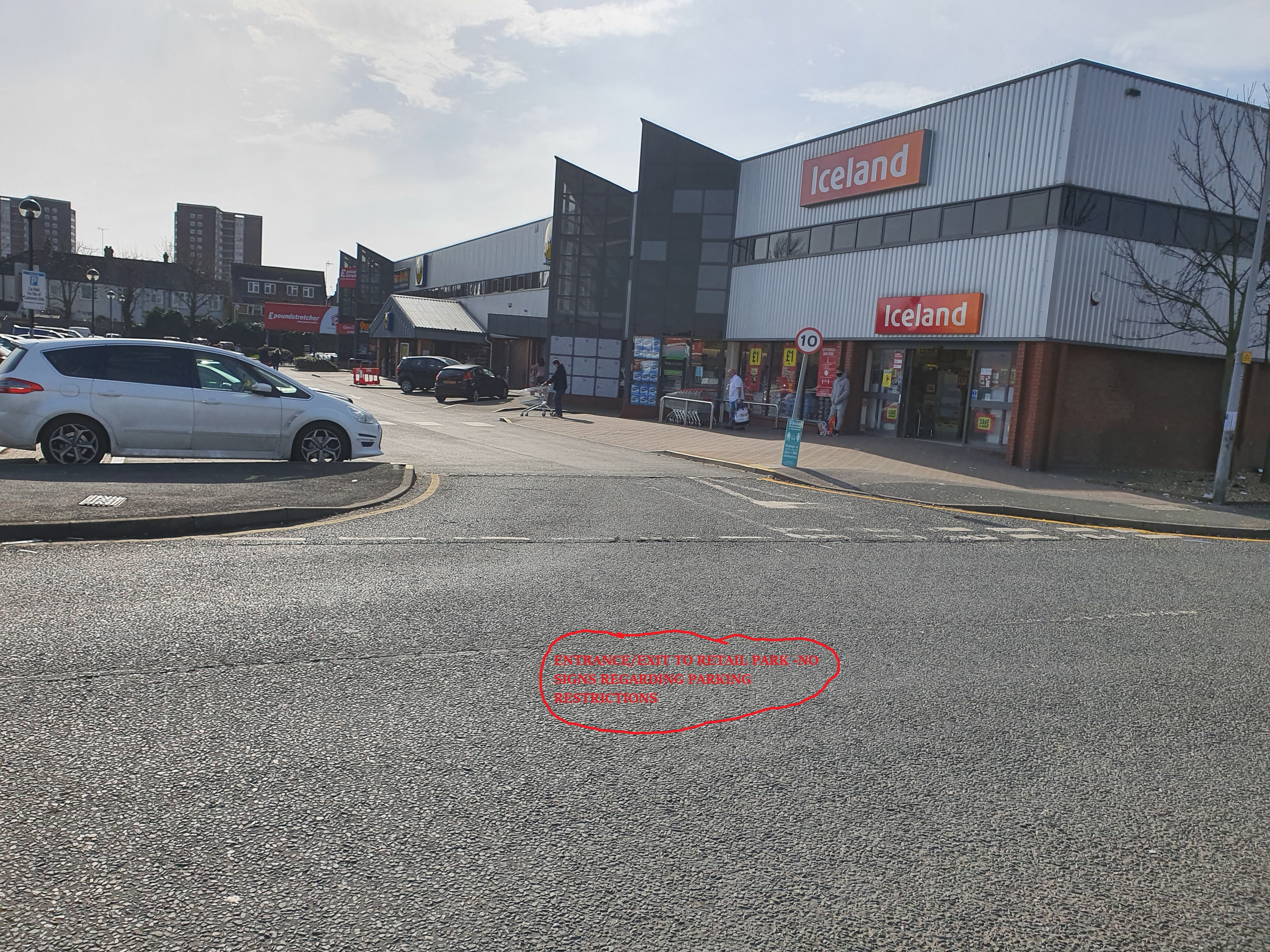
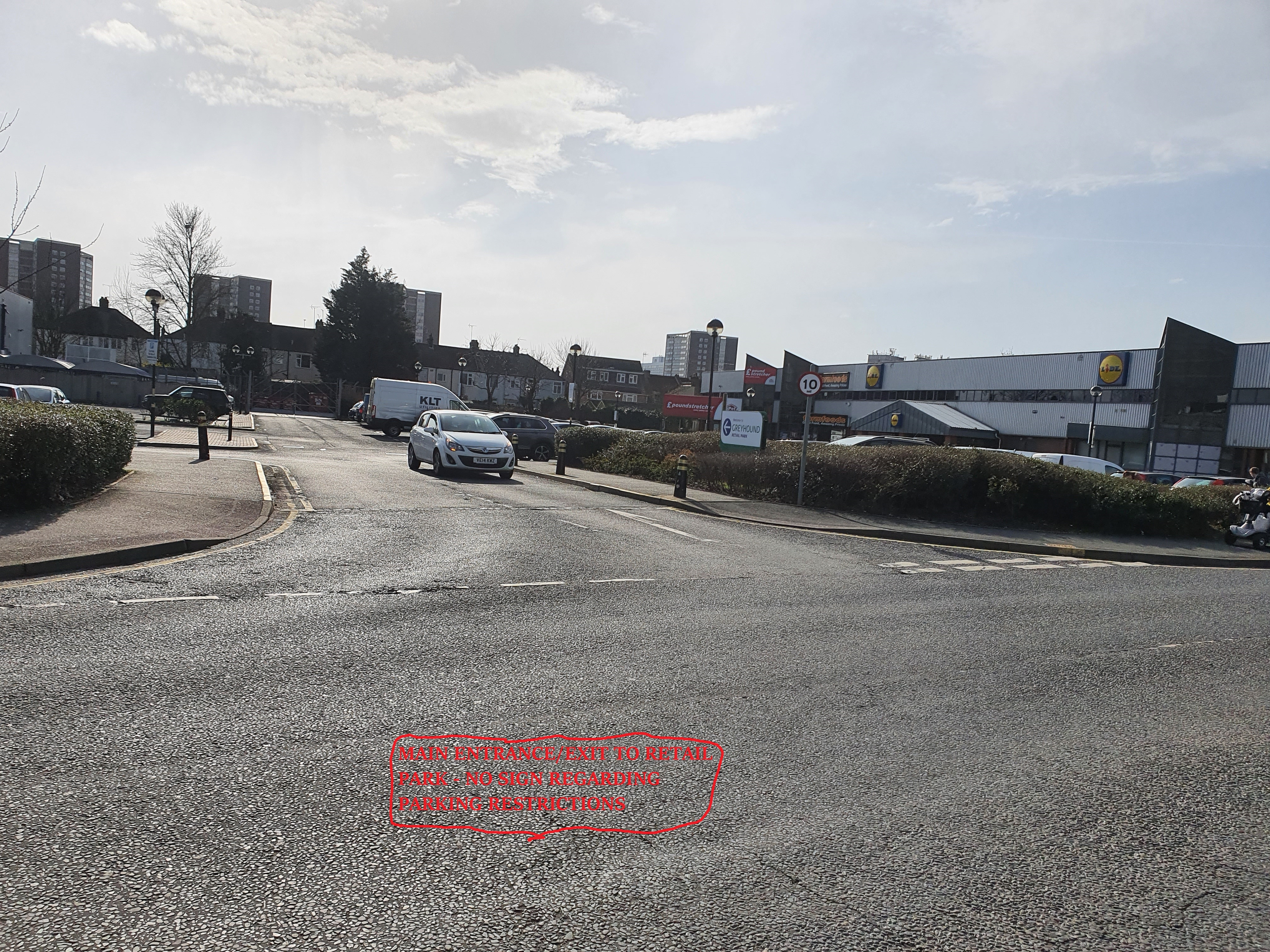
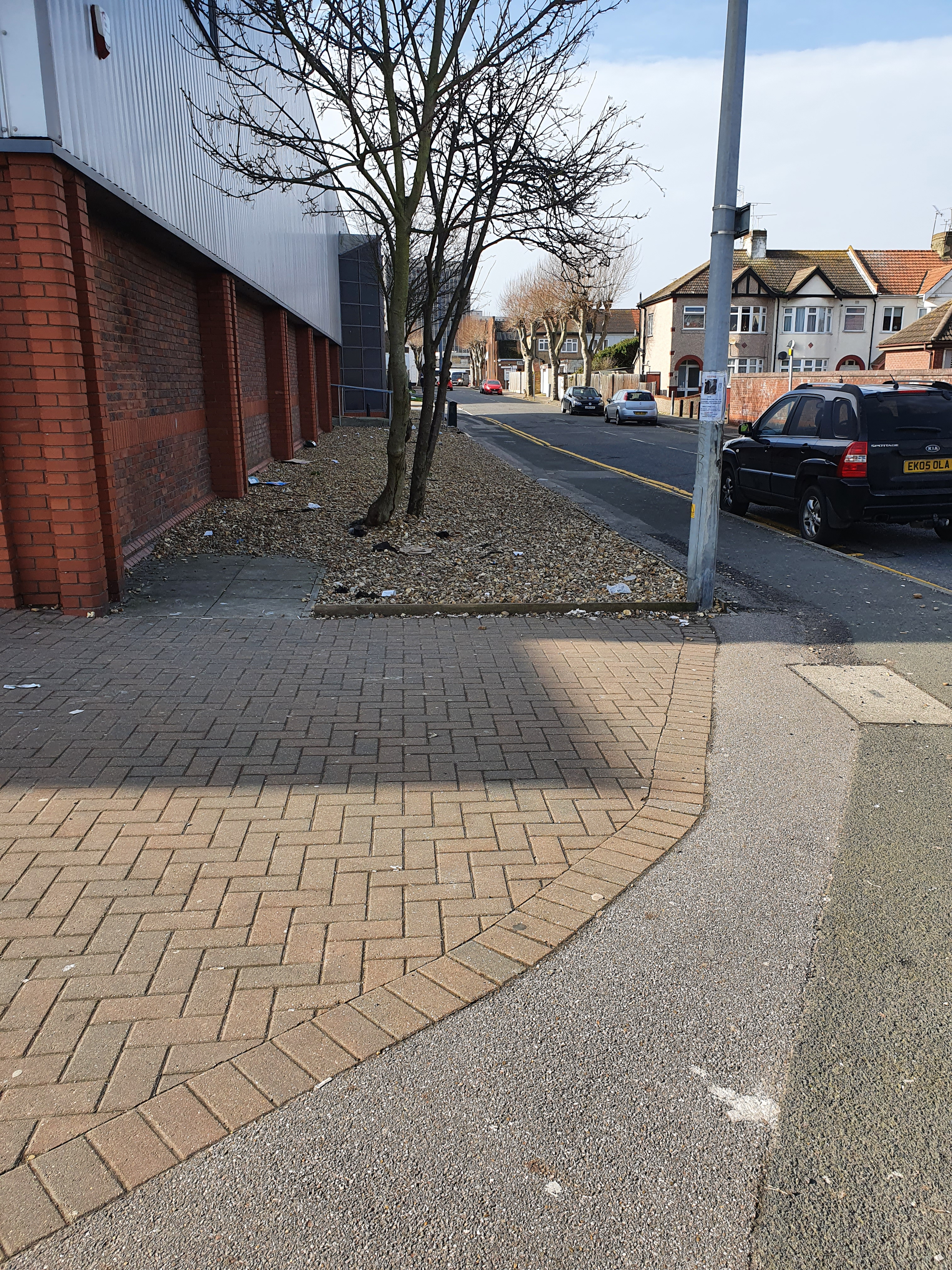
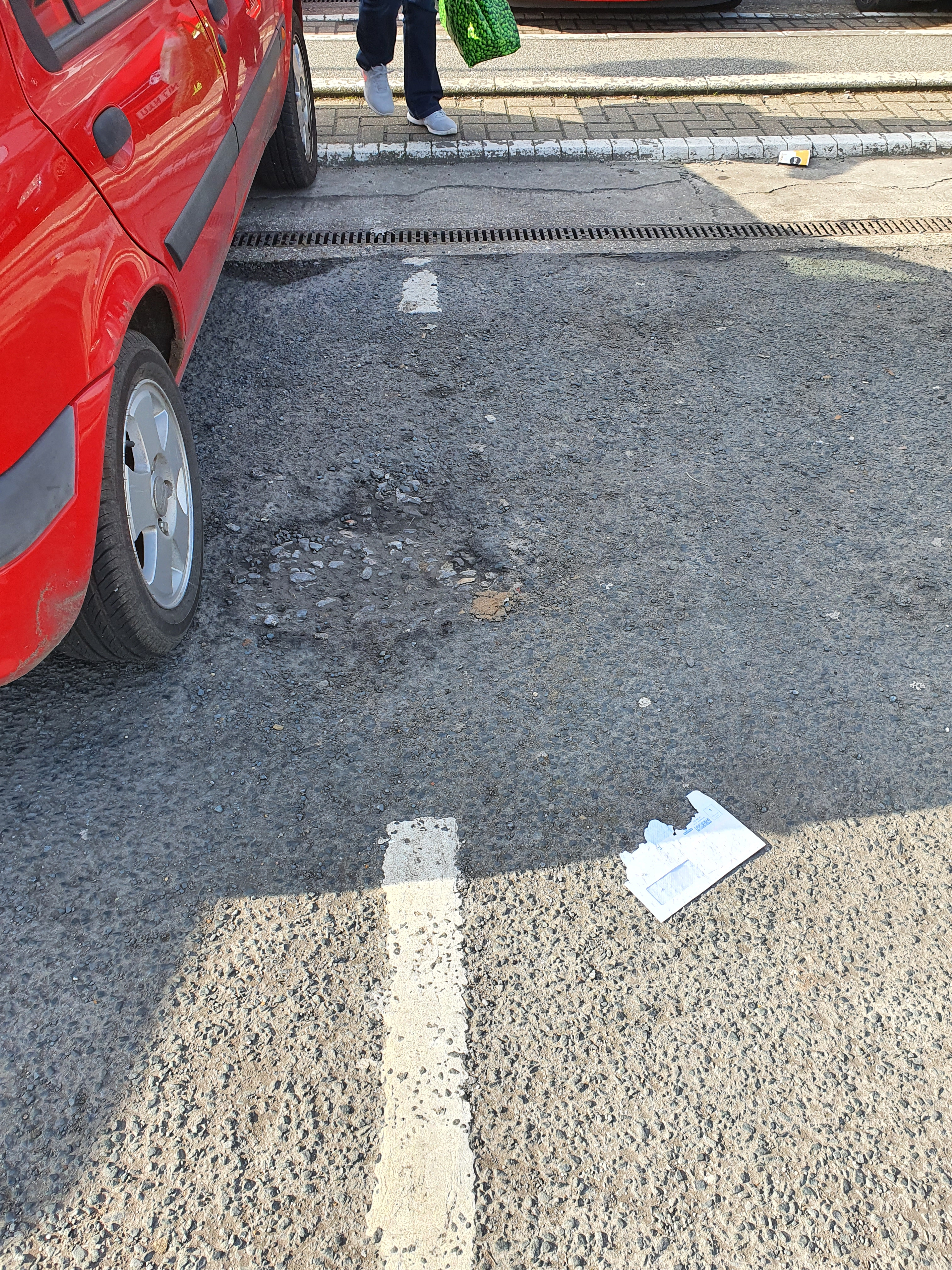 0
0 -
I don't understand the significance of the pics of the bay and the bush in the corner which is not near the car?PRIVATE 'PCN'? DON'T PAY BUT DON'T IGNORE IT (except N.Ireland).
CLICK at the top or bottom of any page where it says:
Home»Motoring»Parking Tickets Fines & Parking - read the NEWBIES THREAD1 -
I wouldn't be submitting any photos that have 'better' marked spaces, use only those that support your case, not UKPC's.Are the three date stamped photos those taken by you, or by UKPC?Please note, we are not a legal advice forum. I personally don't get involved in critiquing court case Defences/Witness Statements, so unable to help on that front. Please don't ask. .
I provide only my personal opinion, it is not a legal opinion, it is simply a personal one. I am not a lawyer.
Give a man a fish, and you feed him for a day; show him how to catch fish, and you feed him for a lifetime.#Private Parking Firms - Killing the High Street2 -
Yes the date stamped photos are the UKPC ones. I guess some of the other pics I took aren't relevant? Was just trying to illustrate that the markings are unclear (in my opinion) and that the car park is messy, lots of potholes & poorly maintained. Maybe I should lose these?
I'll include into the wording - Not the landowner, and, No standing to issue charges in their own name.
Also I'm unsure how to make my text document & pics into a pdf file to submit to POPLA?1
Confirm your email address to Create Threads and Reply

Categories
- All Categories
- 352.9K Banking & Borrowing
- 253.9K Reduce Debt & Boost Income
- 454.7K Spending & Discounts
- 246K Work, Benefits & Business
- 602.1K Mortgages, Homes & Bills
- 177.8K Life & Family
- 259.9K Travel & Transport
- 1.5M Hobbies & Leisure
- 16K Discuss & Feedback
- 37.7K Read-Only Boards





